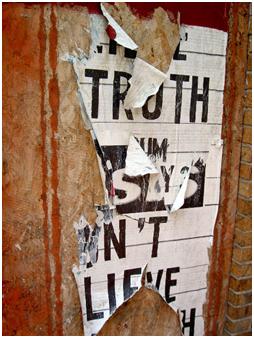Layers
 I used to say “I’m an amateur, frustrated graphic designer. I know what looks good; I just don’t know how to get it to look that way.”
I used to say “I’m an amateur, frustrated graphic designer. I know what looks good; I just don’t know how to get it to look that way.”
My justification for my statement was that I picked up the instruction books and made efforts to self teach myself, but the results kept me wanting and making mediocre designs.
The good news is I discovered a tool called layers in the process. What are layers?
Let’s say that you want to make some adjustments to a photo you are contemplating using in your design. You could work directly on the photo or you could use layers. A layer is like a clear piece of plastic you put over the picture. You make the adjustments on the layer rather than directly on the picture. This gives you an opportunity to keep the original picture intact while making your additions, subtractions and enhancements on the layer. If you don’t get the results you’re after, you can remove the layer and begin with another until you do.
The ultimate result is a better looking picture.
It got me to thinking about the work that I do with people. I discovered that I rarely work on the surface anymore. In the past, when I worked on their original photo, my results were too hit and miss. Working on the original constitutes giving advice.
Giving advice may be “spot on” or it may be spotty. Once you get spots on the original, it proves more difficult to correct. Working on the original rarely has any beneficial effect. Giving your opinion may prove temporarily helpful but the benefits are not usually lasting. Think of it this way: Opinions are like websites – every asshole has one.
Working on layers with people is a way of working on the original without doing any harm. It’s sort of like the Hippocratic Oath that physicians take.
I find that people have parts of them – layers if you will. I like to work with the part of them that has the difficulty. I find there is rarely any difficulty with the original. The problem sits on a layer somewhere. My job is to find that layer and make the corrections there, improving the overall picture.
So how does this translate to you? My suggestion is to use the words that you describe yourself with judiciously. Those words are “I am.”
“I am an awful mother. I am a dreadful spouse. I am the laziest person I know. I am a blah, blah, blah.”
When you make disparaging declarations using “I am,” you are working on the original photo and doing harm.
What if you said, “There is a part of me causing me to be lazy”? That immediately takes the onus off of the whole and ascribes it to a part. It’s much easier to work on a part than it is to work on the whole.
If you only have a faulty carburetor, how accurate is the statement, “This is a lousy car”?
We are in the habit of making those type statements about ourselves and the result is damage to the original, with little hope of getting to the specific part and making repairs.
Begin to notice your disapproving “I am” statements and take them apart. Make it your mission to find the part of you that needs work rather than ascribing your flaw to the whole of you.
Just this subtle shift in awareness is oftentimes all that is necessary to go to work on the layer that needs attention. It makes life much more manageable by not having to eat a whole cow at once.
All the best,
John
http://cdbaby.com/cd/johnmorgan
http://www.cafepress.com/grasshoppernote/3580301
Be Sociable, Share!
